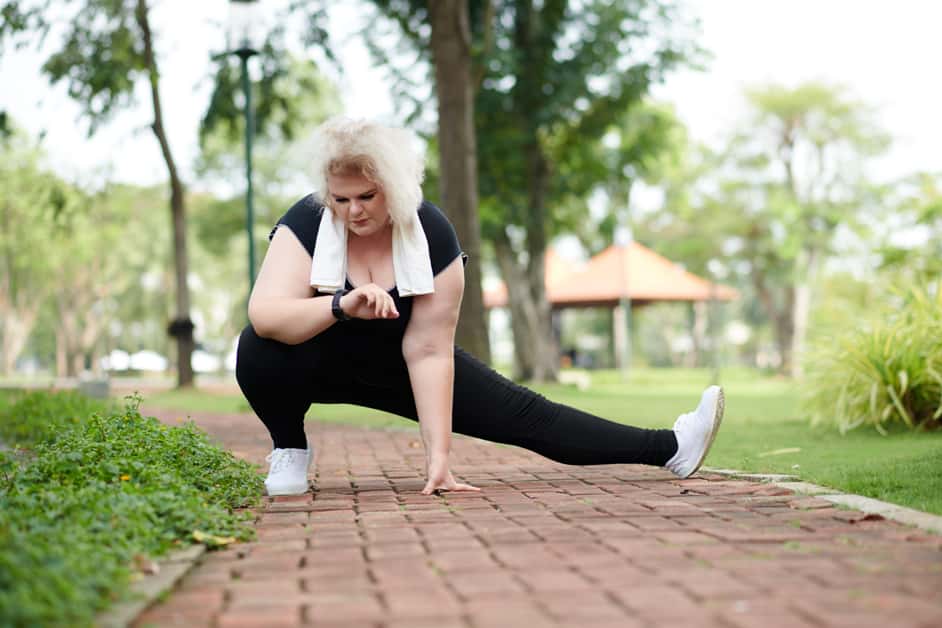Introduction
Knee ligament rehabilitation is key for recovering from injury and improving mobility. Mobility drills can help reduce pain and improve the range of motion of injured or torn ligaments in the knee.
Mobility drills involve stretching and strengthening exercises that target the affected joint, and support muscles. These can be done during physical therapy sessions, under a doctor’s supervision. At home or in a gym, individuals can also do these exercises.
The aim of mobility drills is to reduce pain levels and strengthen knee joints, tendons and ligaments. Flexibility can decrease the risk of further ligament injuries. When combined with physical therapy, these drills give long-term benefits for rehabilitative care.
This article will discuss how to address knee issues through mobility drills, based on research-backed methods and approaches. It will include information on specific exercises proven safe and effective for people recovering from a torn ACL or MCL/LCL injury, or those with arthritis and deteriorating cartilage in their knees. It will cover potential risks and safety concerns related to these exercises after a recovery period from an injury.
Benefits of Mobility Drills for Knee Ligament Rehabilitation
Knee ligament rehab can be tough. Mobility drills make it safer and enjoyable! They involve joint mobility exercises to improve range of motion and strength around the knee joint.
Let’s explore the benefits of using mobility drills for knee ligament rehab:
Increased Range of Motion
Mobility drills are often recommended to help with knee ligament rehabilitation. Moving a joint through its full range of motion increases flexibility and helps prevent injury. It also improves the range of motion in the knee, allowing for an easier and pain-free movement.
These drills can also strengthen and stabilize the knee joint. This is very important when ligament tears occur. Targeting muscle activation around the joint and strengthening them with small, controlled movements strengthens the joint. This leads to less pain and swelling, and the ability to take part in activities without re-injury. For example, shallow squats involve activating muscles while maintaining correct posture. This exercise helps build strength around the knee, as well as protect any further damage.
Mobility drills have psychological advantages too. They can improve self-confidence and balance when standing or walking. They also give an individual something positive to focus on during recovery. In the long-term, mobility drills can produce progress with physical function that is essential for overall health, well-being and life satisfaction.
Examples of mobility drills include:
- Shallow squats
- Leg lifts
- Step-ups
- Calf raises
- Hip abduction
- Hip adduction
Improved Strength and Stability
Mobility drills can help those recovering from knee ligament injuries. Benefits include increased strength and stability, as well as joint health.
- Squats and lunges can improve strength, as they target muscles that support and move the joint.
- Flexibility also increases due to improved range of motion. This helps with joint structural integrity and physical stress tolerance.
Stability can be improved by exercising single muscles or engaging proprioceptors. This targets weak or tight areas, reducing risk of further injury. Dynamic stable joint control helps with neuromuscular adaptations for better functional stability in activities.
The improved strength and stability from these exercises provide long-term benefits for both injury prevention and post-injury recovery. This allows an active lifestyle without fear of re-injury due to joint weakness or instability.
Reduced Risk of Further Injury
Mobility drills, aka range of motion exercises, are essential for those recovering from a knee ligament injury. They have many advantages throughout rehabilitation. They can restore joint movement and visibility that may have been lost due to the injury. This helps reduce the pressure on tendons and ligaments. Balanced joint mobility, muscle and tendon flexibility can reduce the risk of re-injury and could delay or stop more surgery.
These drills should be part of the rehab plan from initial treatment to return-to-play phases. This helps athletes get back functional strength and range of motion in their knees. Regular practice of mobility drills ensures:
- Optimal stability
- Better gait mechanics
- Increased knee health
This gives athletes confidence when they come back to their sports activities.
Types of Mobility Drills
Mobility drills are vital for rehab of knee ligament injuries. They build strength in the knee, promote coordination and assist recovery. Doing these drills can help patients recover safely and efficiently.
We’ll look at different types of mobility drills and how they help with knee ligament rehabilitation. They can be done anywhere!
Active Range of Motion Exercises
Active Range of Motion exercises are essential for knee ligament rehabilitation. They improve the range and quality of knee joint motion, aiding strength and stability. Do dynamic stretching beforehand to ensure muscle flexibility.
These exercises involve moving the joint and resisting any resistance. They’re effective for knee function and recovery from knee ligament injury or surgery. They target specific muscles and structures that increase mobility and assist with recovery.
Examples include:
- Pendulum stretches
- Straight leg kicks
- Deep squats
- Weight shifting activities
- Circular movements
- Heel slides
- Side-to-side motions
- Bridge poses
- Step-overs
- Balance beam walking
Do them with control and focus on technique.
It’s recommended to do these three times a day, 10–20 repetitions each time, based on progress.
Eccentric Exercises
Eccentric exercises are vital for knee joint stabilization. They provide resistance to the contraction and promote flexibility in the leg. Examples of eccentric knee exercises include:
- Bent Knee Squats: Using a weighted bar or bench to straighten the leg. Keep your back straight and quads tense.
- Calf Raises: Lift your body onto your toes using a staircase, block or plyometric box. Hold for one second before lowering.
- Isometric Calf Holds: Stand on an unstable surface with little cushioning. Bend one knee at 90 degrees and hold for 30 seconds or longer. Don’t lean too far forward into the pads.
Isometric Exercises
Isometric exercises are a type of mobility exercise. They involve contracting muscles without any joint movement. These drills are safe for knee ligament rehabilitation patients and can help build up strength, stability and ROM in the leg muscles.
Isometric exercises can be done with an immovable object, like a wall or bench, or with a resistance band/cable machine. Examples include:
- Wall sits – sit against a wall and push back into it.
- Lunge holds – stand two feet in front, lower yourself to 90 degrees at the knee joint and hold for 10 seconds. Repeat x10.
- Squat holds – lower yourself to 90 degrees at the knee joint and squeeze glutes together. Hold for 10 seconds and repeat x10.
Tips for Safely Performing Mobility Drills
Mobility drills are a great way to help recover your knee ligaments. But attention must be paid to proper form to guarantee safety. Here are some tips and tricks on doing mobility drills safely and effectively when rehabbing your knee:
- Ensure you are using the right equipment.
- Always warm up your muscles before doing any drills.
- Start with low-intensity exercises and gradually increase the intensity as your knee regains strength.
- Listen to your body and stop if you feel any discomfort or pain.
- Be sure to stretch after each session.
Start with Low Resistance
Start all mobility drills with little resistance. No pain should be felt. If pain is experienced, reduce the resistance or stop and get medical advice.
Use a light weight or none at all, if needed. For leg exercises, use ankle weights or a resistance band. Ensure the band is secure and the right tension is used. Adjust the grip length and increase tension as the knee ligament gets stronger. The wider stance will heighten the tension, opposite for the narrower stance.
Avoid fast twisting motions of the knee when doing mobility drills. Check the range of motion before each session. If any abnormalities are found, see a doctor before continuing with the program.
Keep breathing while exercising. This helps keep you relaxed and in control of each movement, while preventing internal rotation (twisting). Maintain good posture to avoid extra knee strain. This also boosts the efficiency of movement and can help healing after a ligament injury.
Progress Slowly
Progression and pacing are a must in mobility drills. Don’t rush or overdo it. Avoid injury by going slowly and letting your body adjust to the new movement. Move at your own speed and focus on proper form and technique. If something doesn’t feel right, modify the drill until you’re ready for more. Start with a strain-free range of motion and increase difficulty as needed. Add repetitions or weight to find the right level for you.
Form is key! Warming up is important before any exercise, but especially with dynamic stretches. If done wrong, they can cause injury. By taking it slow and listening to your body, you’ll safely improve flexibility, range of motion, balance, posture—and performance!
Listen to Your Body
Listen to your body and take note of any pain when doing mobility drills. If the pain is sharp or severe, stop and talk to your doctor before trying again. Ensure you do the exercises correctly, with good form and alignment, to avoid stressing joints and ligaments.
Don’t push yourself too hard. Make progress over time and don’t expect too much from one session. Always warm up and stretch beforehand for the best results. Warming up can reduce the risk of injury as it allows muscles to become used to the range of motion gradually, instead of making a huge jump at once.
Conclusion
The end result? Mobility exercises are a good, secure way to rehab knee ligament injuries. Each patient is special, so their rehab program should be too. Take into account factors like age, lifestyle, and overall health before making a plan. Also, set reasonable goals with the patient first.
The physio’s job is to give individual care plans and do exercises that make movement easier. These exercises can include:
- Squatting
- Stepping lunge holds
- Lateral walkouts/raises/clamshells
- Dynamic single leg balance activities
- Upper body core strengthening drills
- Weight-bearing activities that improve lower limb dynamic stability
All of this helps the mobility and stability needed for patients to get back to their normal life after an injury or surgery. Rehabilitation is key for proper healing.
Frequently Asked Questions
Q1: What are mobility drills?
A1: Mobility drills are exercises designed to improve the range of motion and strength of the knee joint. They are typically used after an injury or surgery to help with knee ligament rehabilitation.
Q2: How do mobility drills help with knee ligament rehabilitation?
A2: Mobility drills can help to strengthen the muscles and ligaments around the knee joint, as well as increase flexibility and range of motion. This can help to reduce pain and improve mobility in the knee joint.
Q3: Are mobility drills safe and effective for knee ligament rehabilitation?
A3: Yes, mobility drills are safe and effective for knee ligament rehabilitation when done correctly. It is important to consult with a physical therapist or doctor to make sure the drills are being done correctly and to determine the right intensity and frequency for each individual.





